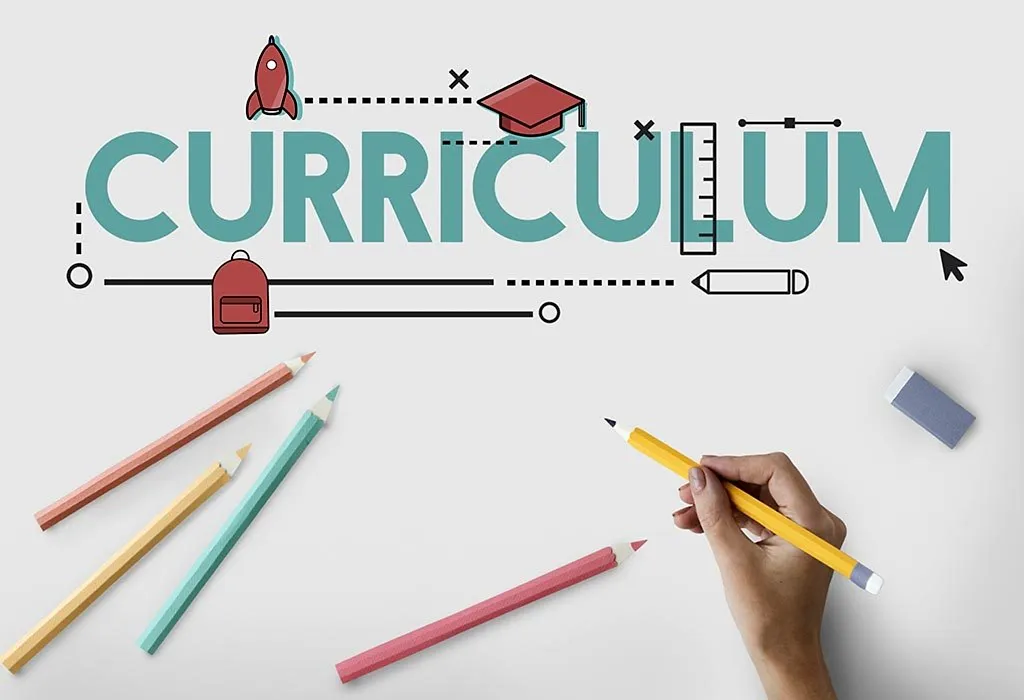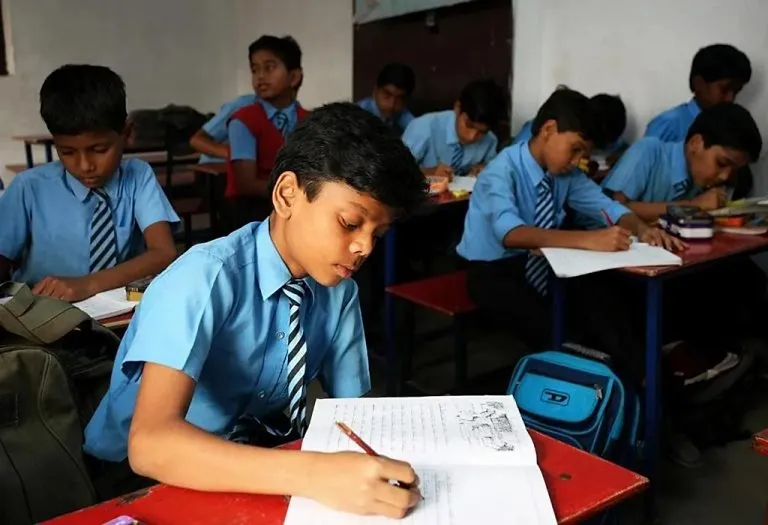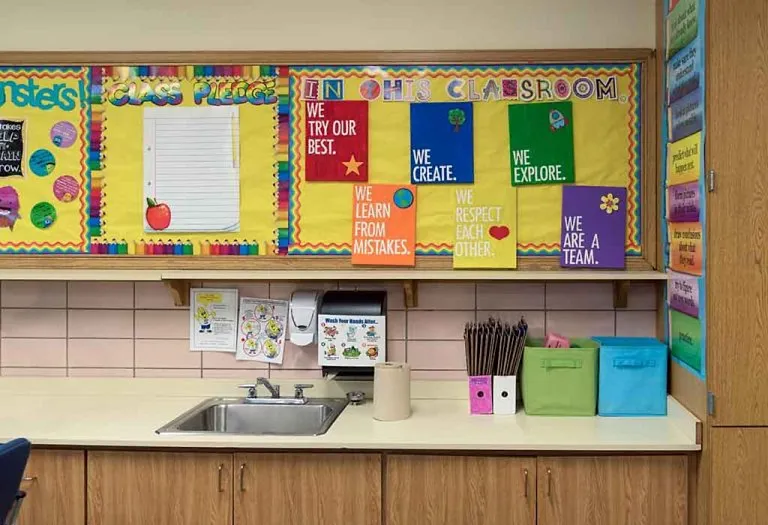Top Education Boards in India – CBSE, ICSE, IB, State Board and Others
It’s time to send your child to school. You must have numerous questions about where to send your child and which syllabus to follow. Or are you even contemplating homeschooling or the radical unschooling option?
The education system in India has been witnessing a huge transition over the last few years. Modern techniques are being adopted in schools; many parents have transitioned to homeschooling their children, and the system is working towards helping students from all backgrounds get a quality education.
So, debating about the education of your child is normal. It is also important to find out about the education boards in India. It is best to find out what is most relevant to your child rather than just figuring out what is generally considered a good board.
List of the Best Educational Boards in India for Schooling
If you are trying to understand the good and the bad about the different syllabus and school boards in India, then here’s a brief note about the boards that are followed in India.
1. CBSE
CBSE (Central Board of Secondary Education) is considered to be the most common and most accepted board in India today. When it comes to standardizing a common education board for most schools in the country, CBSE has achieved it. It is also the national level board that is adopted in many private as well as public schools all over the country.
Objectives
To foster the development of students’ physical, intellectual, and social abilities through progressive teaching, enhanced knowledge, and practical application.
Syllabus
The CBSE (Central Board of Secondary Education) uses the NCERT (National Council of Educational Research and Training) curriculum to prepare students for various entrance exams across India. Key subjects for students in grades 11 and 12 include Physics, Chemistry, Mathematics, Biology, Accountancy, Business Studies, Economics, English, History, Political Science, Psychology, and Geography.
Advantages
- In India, it is the most commonly followed syllabus and hence accepted everywhere.
- Many important exams for higher studies in India is connected to the CBSE syllabus because of its relevance and popularity.
- For families who move around the country, CBSE is quite good as it is easy to switch schools and the child will not find it difficult to pick up.
Disadvantages
- When it comes to art subjects, there are not too many options for the child to choose from.
- When looking for admission in colleges under the state, you will find fewer seats when compared to state syllabus students.
Examination Pattern
The Class 10 exam is known as the All India Secondary School Examination (AISSE), while the Class 12 exam is called the All India Senior School Certificate Examination (AISSCE).
2. ICSE Board
ICSE or the Indian Certificate for Secondary Education has a very strong syllabus that focuses on the basics and foundations of concepts.
Objective
To provide top-notch education through hands-on learning, with the CISCE curriculum emphasizing practical knowledge and critical thinking skills.
Syllabus
Senior school students can choose between Science, Humanities, and Commerce streams, with a variety of subjects available for selection. For literature subjects in English or other languages, the board has specific textbooks, while other subjects do not have prescribed texts. The CISCE curriculum is recognized for its extensive, thorough, and challenging syllabus, covering numerous topics, including 23 Indian languages and 12 foreign languages. This makes it one of the most rigorous boards in India.
Advantages
- There are many options for children to pick from in every domain.
- This syllabus helps students who would like to study outside the country.
Disadvantages
- Moving to another board might be difficult once the student is accustomed to the learning techniques.
- If there are no good teachers or teaching methods followed, the students will need to look out for extra help through coaching classes and tuitions.
Examination Pattern
CISCE administers three examinations: the Indian Certificate of Secondary Education (ICSE) for 10th-grade students, the Indian School Certificate (ISC) for 12th-grade students, and the Certificate of Vocational Education (CVE) for those who have completed ISC and are interested in specialized vocational training.
3. IB
International Baccalaureate is an internationally acclaimed syllabus and has recognition all over the world. This syllabus is followed in more than 100 schools in India.
Objective
To create global citizens by developing critical thinking and problem-solving skills with international mindedness throughout the program.
Syllabus
The curriculum is focused on experiment-based learning by not fixing any reading lists or textbooks. The IB board offers the following educational programs:
- Primary Years Programme for students aged 3-12 years.
- Middle Year Programme for students aged 11-16 years.
- Diploma Programme for students aged 16-19 years.
- Career-Related Programme for students aged 16-19 years.
Advantages
- Teaching methodologies that are followed in this syllabus hold a variety.
- The syllabus uses modern learning techniques and focusses on quality education.
- The number of students in every class is limited to a very small number, and this makes a huge difference as personal care is given to each one.
- The syllabus helps students from families that tend to move around the world quite often, as this is the program of study that is followed in many countries in the world.
- Syllabus structure calls for interaction and activity-based learning which is a great technique for children to learn.
Disadvantages
- Most of the schools that have this syllabus are quite expensive.
- Schools with this board are mostly found in the metro cities only.
- Transitioning to the national or state syllabus will be very difficult for a student because of the varied teaching techniques that are followed.
Examination Pattern
The IB Diploma Programme (DP) and Career-related Programme (CP) are conducted in two sessions in November and May every year.
4. State Board
Every state has a state board syllabus that also conducts a standard examination. The state syllabus is followed in private schools and the government-run schools as well. The state board syllabus is different in every state and is built for the specific state.
Objective
To provide a regionally focused program and curriculum that emphasizes state languages and prepares students for state-level engineering and medical entrance exams.
Syllabus
Certain state boards use government-specified textbooks and curricula to help students prepare for national exams. Some state boards use NCERT textbooks as part of their curriculum.
Advantages
- The curriculum is highly relevant to the students.
- The cost of education is comparatively very less.
Disadvantages
- Most state board syllabus has a strong curriculum, but teaching methods might be outdated.
- Quality of teachers that are in schools that have state syllabus is quite low.
- Some schools have huge numbers, and this makes it difficult for children to learn and grow.
Examination Pattern
State boards typically conduct two main exams: the Secondary School Certificate (SSC) for 10th-grade students and the Higher Secondary School Certificate (HSC) for 12th-grade students.

5. IGCSE
The IGCSE syllabus is crafted specifically for students who would like to pursue an internationally recognized syllabus. IGCSE is preferred for students who live outside Britain and who would like to pursue the English qualification system.
Objective
To offer a high-quality, international-standard education that fosters critical thinking, creativity, and a broad understanding of various subjects. It aims to prepare students for further academic pursuits, such as A-levels, the International Baccalaureate, or similar qualifications.
Syllabus
The IGCSE syllabus encompasses a wide range of subjects, allowing students to select courses that align with their interests and career goals. Students can choose from several subjects, including core subjects like Mathematics, English, and Science, as well as specialized courses in Humanities, Business, Arts, Technology, and more. This flexibility enables students to tailor their education to suit their individual needs.
Advantages
- The Cambridge IGCSE is recognized all around the world, in various colleges and companies as well. So children who wish to pursue education outside India in some time can opt for this board.
- Collaborative learning is highly encouraged. This method helps students learn together and also reduces the pressure of competition to a great extent.
- It is considered to be one of the most wanted syllabi in the world because of its standardization.
Disadvantages
- Rigorous examination styles that can make it difficult for students to manage.
- The marking in examinations are also very rigorous, and this makes it difficult for a student to get high scores.
- Students who wish to stay back in India and study might find it difficult to get admission in colleges as their makers might not be as good as students from another syllabus.
Examination Pattern
The IGCSE examination pattern varies by subject, with most subjects having both written and practical assessments. Exams typically occur at the end of a two-year study period. Depending on the subject, the assessment may include multiple-choice questions, structured questions, essays, practical tasks, or oral examinations. This varied approach aims to test students’ knowledge comprehensively and encourage different learning styles.
6. CIE
Cambridge International Examinations provides internationally recognized qualifications, examinations in more than 150 countries in the world.
Objective
To establish a robust knowledge base through a commitment to lifelong learning.
Syllabus
There are no mandated textbooks in this curriculum. It includes primary, lower secondary, and upper secondary education, leading to advanced levels. The curriculum is highly flexible, offering more than 70 subject options at the IGCSE level and over 55 subjects at the AS and A levels. With a strong emphasis on English, it is well-suited for students seeking admission to international universities.
Advantages
- Learning methods are extremely helpful for students to learn and grow in specific
- One great advantage of CIE is that it encourages innovation to great levels, thus allowing the child to explore beyond textbooks.
- Teachers are provided with many materials that help them, thus making learning really interesting for students.
- The syllabus is built in a way that all sort of discriminations and bias are excluded from learning.
Disadvantages
- Students who move from CIE to another syllabus might find it difficult to adjust because of the many techniques that are followed in the CIE system
- The schools with Cambridge boards are usually quite expensive.
Examination Pattern
The primary exams are the IGCSE, the AS level, and the A-level assessments.
7. NIOS
The National Institute of Open Schooling (NIOS) aims to make education flexible and universal for all students. It is one of the most student-friendly boards in India. It is child-centric and allows the child to make decisions as to what they what to learn, how they want to learn and when they want to learn.
Objective
To provide flexible education accessible to all segments of society, thereby enhancing literacy and offering adaptable learning paths.
Syllabus
The curriculum uses both NCERT and NIOS textbooks. The Open Basic Education (OBE) program for classes 3 through 8 includes fundamental subjects like Mathematics, Environmental Science, and Computer Studies. For the 10th grade, students select from two groups with a minimum of five subjects, including a language. In 12th grade, students can choose from Commerce, Science, or Humanities streams.
Advantages
- The system provides students with the option of studying at their own pace. The flexibility of this system is like no other.
- It is highly learner friendly and opens students to an array of options to pick from.
- The shift from old learning techniques to more relevant and modern techniques is quite obvious
- There is no obligation to stay in a classroom as learning can happen literally anywhere.
- The examinations are built in such a way that it focusses on student’s interests.
Disadvantages
- The examination system is reported to have many problems as there are no strict regulations to it.
- There is a general bias against NIOS students, especially by private institutions. (However, the certificate is recognized by the government and acknowledged institutes.)
Examination Pattern
The National Institute of Open Schooling (NIOS) administers exams at the secondary and higher secondary levels.
8. Council for the Indian School Certificate Examination (CISCE)
The Council for the Indian School Certificate Examinations (CISCE) is a prominent national-level education board in India. It administers the Indian Certificate of Secondary Education (ICSE) for Class 10 and the Indian School Certificate (ISC) for Class 12. Known for its rigorous curriculum and broad subject choices, CISCE emphasizes a balanced approach to education, focusing on both academic excellence and co-curricular development.
Objective
To provide a high-quality education that fosters holistic development, critical thinking, and a strong foundation in academics, while also encouraging creativity and extracurricular interests. The board aims to prepare students for higher education and competitive exams, both nationally and internationally.
Syllabus
CISCE offers a comprehensive syllabus with a wide range of subjects in Science, Humanities, and Commerce. Students are encouraged to explore various fields and can choose subjects according to their interests. The syllabus promotes in-depth learning and analytical skills, and it includes a mix of theoretical and practical components. The board also emphasizes language skills, with options to study multiple languages.
Advantages
- Students have the liberty to select subjects from various fields, allowing them to tailor their education to their interests and career goals.
- The curriculum covers a broad range of topics, fostering a well-rounded education that extends beyond traditional academics.
- CISCE promotes both academic excellence and extracurricular activities, encouraging a holistic approach to learning.
- The CISCE qualification is widely accepted by universities in India and abroad, facilitating further studies and international opportunities.
Disadvantages
- The comprehensive syllabus can be demanding, requiring significant effort and time commitment from students.
- Schools affiliated with CISCE may have higher fees, making it less accessible to some students.
- Unlike some other boards, CISCE may not focus extensively on preparing students for specific national-level entrance exams, potentially requiring additional coaching
Examination Pattern
CISCE conducts two key examinations: the Indian Certificate of Secondary Education (ICSE) for Class 10 and the Indian School Certificate (ISC) for Class 12. The examination pattern involves both internal assessments and external exams, with subjects often having a mix of written tests, practical assessments, and coursework. The exams are designed to test students’ understanding of subjects comprehensively and promote analytical thinking.
These are the different types of boards in India.
FAQs
1. What makes an international board different from national boards in India?
International boards, such as IGCSE and IB, offer globally recognized curricula with a focus on critical thinking, problem-solving, and practical skills. They typically provide a wider range of subjects and more flexibility in subject choice. In contrast, national boards like CBSE and ICSE follow a more standardized approach, with a greater emphasis on national education standards and state-level requirements.
2. How does the choice of education board affect university admissions in India?
While national boards like CBSE and ICSE are widely recognized for admissions to Indian universities, international boards like IGCSE and IB can also be accepted, especially for institutions with a global perspective. Some Indian universities may require additional documentation or equivalency certificates for international board students to ensure they meet specific requirements.
3. Can students transfer between different education boards in India?
Transferring between different boards of education in India is possible, but it requires careful planning. Factors like curriculum differences, credit transfers, and exam schedules can complicate the process. It’s important to check with the schools involved to understand the transfer policies and ensure a smooth transition for the student.
Parents and children undergo a lot of pressure and stress overload when it comes to schooling and education. Understand that there is no particular best board in India for education. It is important to ensure that your child takes education joyfully and not as a burden. Understand that every child’s capabilities are different. It is important to figure out where your child fits in. This will also reduce the stress and pressure that comes with education. With the vast array of options, it can be difficult for parents to pick the right Board for their children. It is important to find out how each board is and how it is relevant for your child.
Also read:
IGCSE vs CBSE
RTE School Admission
No Detention Policy in Education – Pros & Cons
Tips for Choosing the Best School for Your Child
Top School Admission Interview Questions and Answers for Parents
Was This Article Helpful?
Parenting is a huge responsibility, for you as a caregiver, but also for us as a parenting content platform. We understand that and take our responsibility of creating credible content seriously. FirstCry Parenting articles are written and published only after extensive research using factually sound references to deliver quality content that is accurate, validated by experts, and completely reliable. To understand how we go about creating content that is credible, read our editorial policy here.























